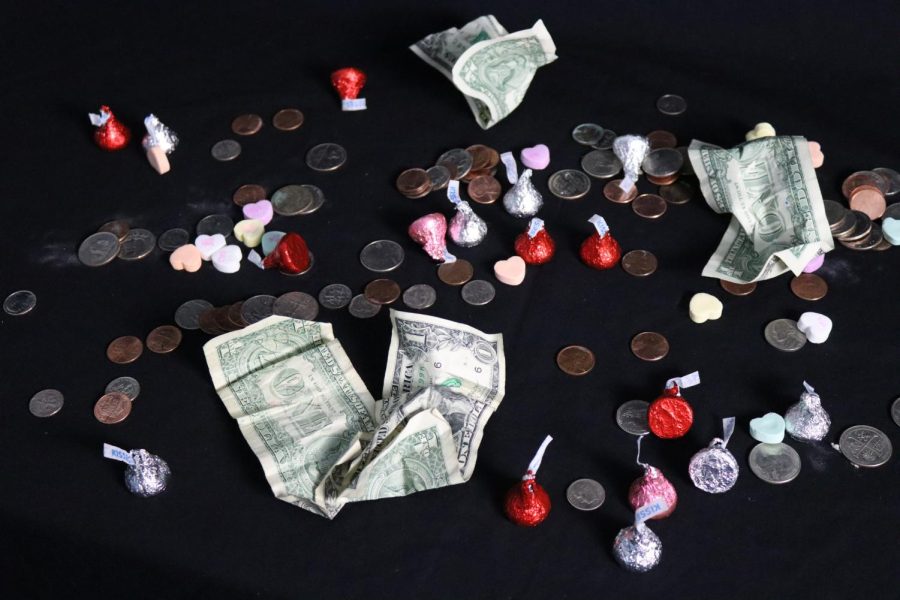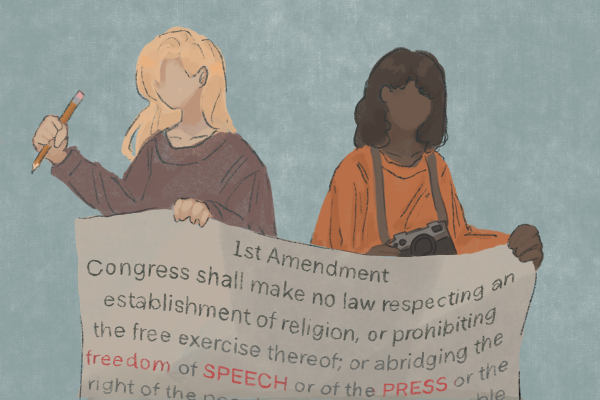Sweet or sour? The downsides of buying Valentine’s Day products
A scattered collection of coins, dollar bills, Hershey Kisses and candy hearts lie on a table, representing Valentine’s Day and the consumerist culture surrounding it. Shopping for the holiday may be fun, but by doing so the buyer actively partakes in the capitalistic nature of the money-making event, rather than declaring their love.
February 9, 2023
Feb. 14 has been welcomed by all as the day of love. As soon as Christmas is over, stores start putting out goods colored in the appealing red, pink and white colors associated with Valentine’s Day. As exciting as it is buying chocolates for your significant other, friends and family, it is undeniable that Valentine’s Day has become so pervasively consumerist.
Valentine’s Day doesn’t only apply to people who are in a relationship. It is advertised for everyone. Whether you want to buy candy for your friends or yourself, it is still encouraged to buy Valentine’s Day products because of how heavily marketed it is.
It is no secret that companies have capitalized on this and created the tradition of celebrating Valentine’s Day through flowers, chocolates and other merchandise. According to the National Retail Federation (NRF), spending for Valentine’s Day in 2022 was the second highest in history, hitting a jaw dropping $23.9 billion, $2 billion more than the year before.
There isn’t anything wrong with a day dedicated to the ones that you love, though this connects with the underlying broader problem of capitalism. Corporate greed has blown up this holiday disproportionately, turning it into the fifth biggest money making event in the United States in 2022.
According to the NRF, people spent around $175 per person in 2022. That is more money being spent than a day’s work for minimum wage in California. Though celebrating Valentine’s Day may be an expensive choice, businesses have instilled expectations into the minds of consumers. We not only want to give chocolates or flowers during Valentine’s Day but we want to receive gifts, ultimately playing right into the hands of this capitalistic money-making scheme.
Rather than falling for this capitalist scheme, I think we should be spending our time with the ones nearest to us by choice, not because of a holiday. As sweet as Valentine’s Day may be, at the end of it all, it’s just another consumerist strategy by corporations that has been warped to being a day of love.



















